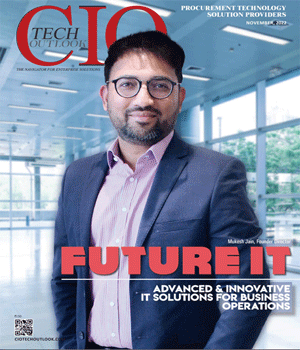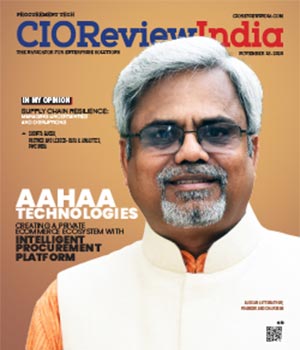
Four Key Procurement Technology Trends Enabling Ease of Business
Abhrasnata Das | Saturday, 01 October 2022, 18:58 IST
 Today’s enhanced and automated business solutions require businesses to remain flexible and open to the adoption of new technology that can optimize the way benefits are delivered to both internal and external stakeholders. The high degree of granularity provided by advanced technologies enhances business agility, drives continuous process improvement, and supports an operating model that advances business excellence in the procurement and supply chain functions. This can close the value gap between strategic sourcing initiatives and the bottom line.
Today’s enhanced and automated business solutions require businesses to remain flexible and open to the adoption of new technology that can optimize the way benefits are delivered to both internal and external stakeholders. The high degree of granularity provided by advanced technologies enhances business agility, drives continuous process improvement, and supports an operating model that advances business excellence in the procurement and supply chain functions. This can close the value gap between strategic sourcing initiatives and the bottom line.
Procurement technology has become a de facto platform for companies to purchase teams to manage their procurement of goods and services, suppliers, and budgets. To achieve best-in-class procurement and improved supply chain capabilities and resource management, it is possible to identify better metrics for procurement ROI, contract compliance, contract life savings, process efficiency, and invoice accuracy.
Now, let us look into the most important trends in the procurement technology domain.
Rise of Dynamic Software
Growing businesses will rapidly see the shortcomings of the current systems as more of them come to realise the crucial role that procurement plays in the long-term strategic success of their firms. For instance, the majority of startups still use antiquated procurement practises like manual invoicing and spreadsheet-based data collecting. However, the coming days firms will need to switch to procurement software to handle procedures like invoicing, vendor relationships, and inventory as consumer expectations and the market change.
Today, more and more businesses are seeing the benefits of automating repetitive processes. They are aware that their businesses require every advantage they can obtain. They also understand that automation will provide them the time and resources they need to keep succeeding.
Leveraging Artificial Intelligence
Any expanding firm that wants to make procurement a more significant division must first understand the necessity for real-time risk analysis. However, due to the massive volume of data and the market's constant volatility, it is hard for individuals to accomplish this successfully on their own. Because of this, more businesses will rely on AI systems in the future.
AI-powered procurement will be able to track news events, market information, and other cues to provide thorough supplier reports in real time. These reports will provide companies the chance to compare their present suppliers to those of their rivals and make sure they are using the correct vendor at the right time to lower organisational risk.
Long-term commercial partnerships will be strengthened by the improved supplier openness. The market will become more transparent, and suppliers will adjust to suit the clients' rising expectations.
Need For Mobile Procurement
It is now a must to be able to quickly take a photo and send it to the ERP. Mobility really offers an additional layer of optimization that is essential for cutting expenses and improving company procedures. These days, mobile devices provide you access to an infinite number of applications. Businesses must maintain their agility right down to the micro level. To do it, mobility in the procurement systems is crucial.
Leaders will provide their staff the tools they need to handle every step of the procurement process on the go with ease. They will be able to work on the move using agile apps that support them in their work, regardless of whether they are at distant depots, travelling between departments, or just out on the floor.
Customized Procurement Systems
Custom procurement systems created from scratch at exorbitant costs and with agonisingly long implementation times won't be the standard for expanding businesses anymore. Thanks to low-code and no-code platforms, software is becoming more and more accessible.
With little to no coding experience, these tools let staff members quickly create automation and connectors. Growing companies may eliminate manual procedures and streamline workflows with the aid of these agile procurement solutions. Businesses will experience a reduction in costs as a result, providing staff members more time to concentrate on sustaining corporate success.
In conclusion
In he coming days, companies will become more productive and will benefit in the long term from investing in technology and procurement tools. The improved efficiency will cause a shift in the process to happen nearly immediately. Additionally, if businesses save money over time, more money will be available for programmes that promote development.
CIO Viewpoint
Indian Retail Dilemma and Challenges
By Kunal Mehta, General Manager IT – Lifestyle Business, Raymond Limited
End to End Supply Chain Planning is the Need of...
By Abel Correa, CIO , Arvind Lifestyle Brands Limited
CXO Insights
Three Pointers To Warehouse Transformation
By Aik Jin, Tan, Vertical Solutions Lead, Zebra Technologies Asia Pacific
Supply Chain Resilience: Managing Uncertainties...
By Sudipta Ghosh, Partner and Leader- Data & Analytics, PwC India
Site Reliability Engineering - Smart Way Of...








